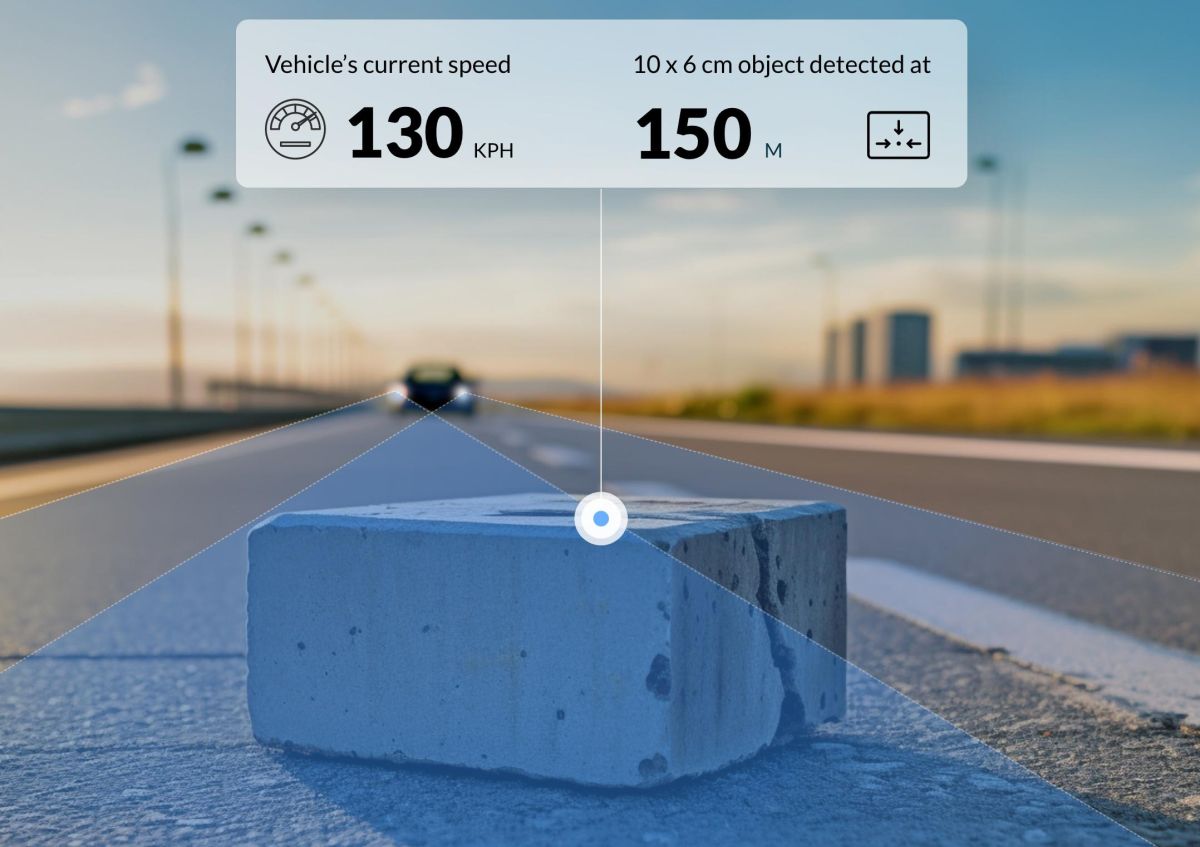As new technology is developed to advance autonomous driving features in modern vehicles, start-up companies, like NODAR, are being established to help accelerate mass-market autonomy.
In April 2023, NODAR received the prestigious Grand Prix ACF AutoTech award in Paris, France. The computer vision company, based in Somerville, MA, is building next-generation 3D perception technology for autonomous vehicles (AVs).
To learn more about how this technology is expected to be used in ADAS and AVs, Autobody News talked to NODAR co-founder and COO Brad Rosen. The entrepreneur has a background in software engineering and an MBA from MIT. Over his career, he has been part of seven venture-backed startups where he held roles ranging from software engineer to CEO.
Can you tell us about NODAR?
Dr. Leaf Jiang founded NODAR in 2018 after receiving his B.S., M.S. and PhD at MIT, where he studied and implemented optoelectronic systems. As a recognized expert in light detection and ranging technology (lidar) systems, he spent 12 years at MIT Lincoln Laboratory building lidar systems for the U.S. military. I joined the company in 2019 to help Leaf develop the business plan around the camera-based 3D sensing technology he had been working on, as well as raise money.
 Brad Rosen, COO and co-founder of NODAR.
Brad Rosen, COO and co-founder of NODAR.
Why is NODAR focusing on 3D sensing technology rather than lidar?
Lidar is a useful and precise tool, but is not perfect for all applications requiring 3D information. Lidar is very expensive due to the electronic components required to measure photons, and lidar has low resolution as compared with cameras. Another shortcoming is that most lidars to date have spinning mechanisms, which break after about 7,000 hours.
Knowing these points and that most intelligent machines regardless of market -- whether vehicles or robots or monitoring equipment -- will require reliable 3D information, Leaf set out to build a less expensive, higher performing, and more robust 3D ranging solution than lidar. Rather than lasers, Leaf used cameras and a technique that dates to the late 1800s called stereo vision, also referred to as binocular vision, which can produce extremely accurate distance measurements.
Can you explain NODAR s 3D sensing technology?
Autonomous vehicles require real-time and reliable long-range 3D information to navigate their environments safely and measure distances. NODAR's patent-pending Hammerhead™ 3D sensing technology was created to deliver new levels of safety to driver-assisted and full AVs.
The platform is based on untethered (independently mounted), off-the-shelf automotive-grade cameras and NODAR software. It is for vehicles of any size -- including automobiles, aircraft, ships, last-mile delivery robots and trains -- and can maintain performance in harsh environments, such as high-vibration, off-road or inclement weather, as well as low light conditions. NODAR's long-range and high resolution allow for quick detection of small objects at long range, such as a black tire on the road at 200 meters. Having reliable 3D depth is critical for safe operation for any autonomous vehicle or safety monitoring application.
How did hammerhead sharks inspire NODAR's 3D technology?
Hammerhead sharks have exceptional depth perception due to their widely set eyes. NODAR Hammerhead™ employs widely positioned cameras in a similar way to calculate depth with exceptional precision by calibrating the cameras in real time, in software. Whether tracking prey in three dimensions through the ocean or navigating a complex and changing roadway, a wide-baseline vision system will outperform other types of 3D sensing. This allows vehicle manufacturers to integrate cameras in novel locations, such as the sideview mirror, roof or headlights. For the first time, nearly any obstacle, from a brick to an overturned truck, can be detected well in advance with exceptional accuracy, giving the vehicle perception system sufficient time for evasive action.
What are some of the advantages compared to lidar?
Wide-baseline camera placement provides long-range (up to 1,000m), highly reliable, accurate 3D sensing and the ability to detect small objects at a distance, offering 10x the resolution of industry-leading lidars. The platform runs on industry-standard hardware and, with no moving parts, Hammerhead™ has a significantly longer lifetime than mechanical lidar. It also performs better in inclement weather and low-light settings due to the exceptionally precise calibration between the cameras enabled by NODAR's algorithms. Using standard cameras rather than high-bandwidth opto-electronics as lidar does, Hammerhead™ is significantly less expensive than comparable lidar systems and the cameras can be mounted in a variety of orientations. In addition, camera movement from road shock, vibration, accidents and temperature fluctuations are automatically calibrated without the need for human and checkerboard, which, before NODAR, was the standard calibration procedure.
What are the company's long-range plans?
Our goal is to be a ubiquitous component in every self-driving car and automated robotic machine. We believe every car, whether it's L2 plus L3 or L4, robotaxi or L4 truck, should have a NODAR-powered stereo vision system. This will not only make automation systems more accessible cost-wise for more vehicles and buyers, but it will also raise the safety bar and reduce fatalities.
What are some of the current trends with startup companies?
In Clayton Christensen's book "The Innovator's Dilemma," the idea is that it's very hard for large companies to create disruptive innovations because they're held back by legacy thinking, politics and improperly aligned internal incentives.
As the automotive industry transitions from hardware to software, the startup ecosystem is becoming extremely important. Cars are being re-thought from the ground up with a software-first focus, like Tesla for instance. Opportunities exist to innovate in all areas of automotive development, from digital design, to safety and ADAS systems, to interior experience, to the contribution of AI in each area. Startups have the chance to bring disruptive thinking to this rapidly evolving ecosystem, and push on the traditional automotive development cycle.
What are some of the new technological developments you are seeing in the industry?
One area of constant innovation is batteries and EVs. New developments are popping up every day in the battery space looking to develop higher-power density, safer batteries made from "greener" components. This is critically important as the world adopts more and more EVs. And then there are the topics of how to charge these new electric cars and recycle the batteries. I'm seeing lots of innovation in these areas as well.
On the software side, we're seeing developments related to infrastructure and how to most efficiently use energy. Related to automotive, research is being done regarding how our EVs become part of a larger electric grid, taking energy from the grid when needed and sharing (or selling!) energy back as needed. There's a lot of software that will come to bear around managing the flow of energy as we store it in batteries.
I also believe hydrogen will play a very important role in the future. Honda's new CR-V is powered by a hydrogen fuel cell and is available for lease to California residents. Obviously, hydrogen creation is a critical area of innovation to support hydrogen vehicles, as well as the topic of hydrogen charging stations.
Last, we're seeing the effects of AI initiatives, such as ChatGPT, all around us and starting to affect our everyday lives. AI is prevalent today in many vehicles, for instance in Tesla's Autopilot and FSD systems, or Mobileye's EyeQ ADAS system. These products are trained on millions of hours of driving and simulation data to augment human driving. This area of innovation is ripe for startups to contribute to.











Stacey Phillips Ronak